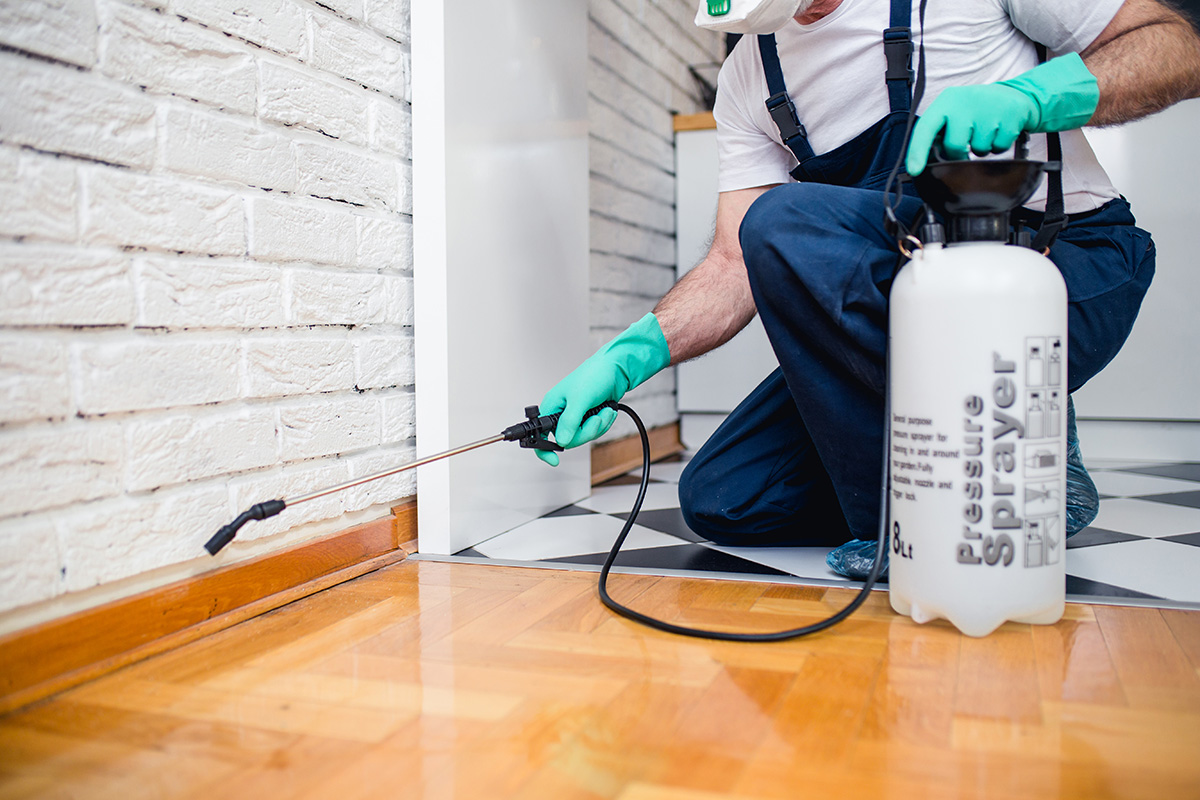A1 Bed Bug Exterminator Charlotte - Reliable and Economical Services
Wiki Article
Bed Pest Therapy Break Down: Contrasting Chemical Vs. Non-Chemical Solutions
In the world of pest control, particularly when dealing with the consistent concern of bed bugs, the option between chemical and non-chemical treatment options can be a crucial one. Both methods offer unique benefits and drawbacks, influencing factors such as effectiveness, safety factors to consider, and general cost. By analyzing the nuanced information of each method, a more clear understanding of which path to go after in attending to a bed bug invasion can be obtained.Performance of Chemical Therapies
Chemical therapies for bed pest infestations have been widely recognized for their powerful and fast effectiveness in getting rid of these insects. When taking into consideration the effectiveness of chemical therapies, it is critical to understand that they can provide a extensive and fast remedy to a bed insect issue. Professional pest control specialists usually depend on pesticides to target bed insects at different phases of their life process, including fairies, grownups, and eggs. These chemicals typically work by disrupting the bed bugs' worried system, resulting in paralysis and eventual fatality.In addition, chemical treatments have the benefit of offering recurring results, indicating that they can proceed to remove bed bugs also after the initial application. This recurring activity is especially useful in combating any possible re-infestations. Furthermore, the quick action of chemical therapies can bring relief to individuals dealing with severe bed insect problems, allowing them to reclaim control of their living spaces swiftly.
Security Worry About Chemical Solutions
One essential element that needs careful factor to consider when making use of chemical remedies for bed insect therapy is making certain the security of residents and the environment. Direct exposure to certain chemicals made use of in bed bug therapies can lead to respiratory problems, skin irritation, or various other negative reactions, specifically in individuals with pre-existing problems or sensitivities.In addition, the environmental influence of chemical solutions is an additional considerable factor to consider. Some pesticides used in bed pest treatments might be unsafe to helpful insects, wildlife, and ecosystems if they seep into the soil or water supply. It is vital to make use of chemical therapies carefully, adhering to security standards, and taking into consideration less poisonous alternatives to mitigate these risks and guarantee the risk-free and reliable administration of bed pest problems.
Advantages of Non-Chemical Methods
Thinking about the potential security concerns and ecological influence associated with chemical options for bed insect treatment, exploring non-chemical approaches offers an appealing alternative with several unique benefits. Non-chemical treatments are ecologically pleasant, as they do not add to air or water pollution, making them a lasting choice for parasite control.In addition, non-chemical solutions can be reliable in targeting bed pests, including hard-to-reach locations where chemical treatments might not penetrate - A1 pest control charlotte nc recommended you read bed bugs. Methods such as warm therapy, vacuuming, vapor cleaning, and mattress coverings provide complete removal without the use of dangerous chemicals.
Limitations of Non-Chemical Treatments

In addition, non-chemical treatments typically call for multiple applications to achieve effective eradication. This can be taxing and may not always ensure full elimination of all bed insects and their eggs, specifically in hard-to-reach or concealed areas.
Moreover, the success of non-chemical treatments heavily depends on proper application and thoroughness, which can be challenging for individuals without expert know-how. Inadequate application of non-chemical methods may result in incomplete obliteration, resulting in consistent invasions and the requirement for extra treatments.
Consequently, while non-chemical therapies have their benefits, it is necessary to recognize these constraints and consider them when establishing one of the most effective approach for handling bed pest infestations.
Cost Contrast: Chemical Vs. Non-Chemical Options
Offered the limitations related to non-chemical therapies, a crucial facet to examine in the context of bed insect administration is the expense comparison between chemical and non-chemical alternatives. Chemical therapies commonly include the application of insecticides by professionals, which can vary from $250 to $900 per area, depending on the seriousness of the infestation and the dimension of the area to be treated. On the other hand, non-chemical treatments like warmth therapy or steam can be more pricey, with prices varying from $1,000 to $6,000 for an entire home. While the first expense of chemical treatments may seem lower, several treatments might be required to totally remove the invasion, possibly boosting the total price. On the other hand, non-chemical alternatives may offer an extra sustainable and environment-friendly option, although they can be cost-prohibitive for some people. Eventually, when thinking about the expense of bed bug treatment choices, it is very important to weigh the in advance expenses against the efficiency and long-term sustainability of the selected approach.Conclusion

Thinking about the possible safety and security worries and environmental impact connected with chemical remedies for bed bug treatment, checking out non-chemical approaches presents an appealing option with numerous distinctive benefits.Provided the restrictions linked with non-chemical therapies, a vital aspect to evaluate in the context of bed insect administration is the expense contrast pest busters in between chemical and non-chemical choices. In comparison, non-chemical therapies like warmth therapy or vapor can be more costly, with prices varying from $1,000 to $6,000 for a whole home. While the preliminary expense of chemical therapies might seem lower, multiple treatments may be required to completely get rid of the infestation, potentially raising the overall cost.In final thought, when comparing chemical and non-chemical bed bug therapy options, it is important to think about performance, security, benefits, restrictions, and cost.
Report this wiki page